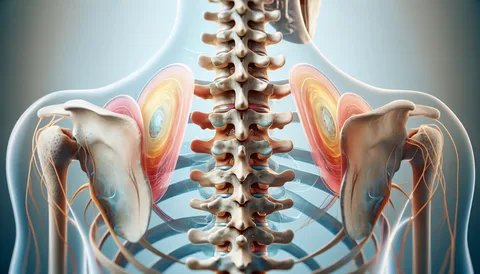ICD 10 DJD typically falls under M15 to M19 in the ICD-10 coding system, depending on the affected joint(s) and the nature of the condition (primary, secondary, post-traumatic, etc.). Below are the most commonly used codes for DJD:
1. M15 – Polyosteoarthritis (Generalized Osteoarthritis)
Used when multiple joints are affected by osteoarthritis, either due to aging (primary) or another underlying condition (secondary).
-
M15.0 – Primary generalized osteoarthritis (multiple joints affected without an underlying condition).
-
M15.1 – Secondary generalized osteoarthritis (caused by a secondary factor such as trauma, infection, or other underlying diseases).
-
M15.8 – Other specified generalized osteoarthritis (e.g., a form of osteoarthritis that does not fall under primary or secondary categories).
-
M15.9 – Generalized osteoarthritis, unspecified (when the type or cause is not specified).
2. M16 – Osteoarthritis of the Hip
Refers to ICD 10 DJD affecting the hip joint.
-
M16.0 – Bilateral primary osteoarthritis of the hip.
-
M16.1 – Unilateral primary osteoarthritis of the hip.
-
M16.2 – Bilateral post-traumatic osteoarthritis of the hip.
-
M16.3 – Unilateral post-traumatic osteoarthritis of the hip.
-
M16.9 – Osteoarthritis of the hip, unspecified.
3. M17 – Osteoarthritis of the Knee
This category is used for DJD affecting the knee joint, which is one of the most common joints affected by osteoarthritis.
-
M17.0 – Bilateral primary osteoarthritis of the knee.
-
M17.1 – Unilateral primary osteoarthritis of the knee.
-
M17.2 – Bilateral post-traumatic osteoarthritis of the knee.
-
M17.3 – Unilateral post-traumatic osteoarthritis of the knee.
-
M17.9 – Osteoarthritis of the knee, unspecified.
4. M18 – Osteoarthritis of the First Carpometacarpal Joint (Hand)
This code is used when DJD affects the first carpometacarpal joint (the base of the thumb).
-
M18.0 – Bilateral primary osteoarthritis of the first carpometacarpal joint.
-
M18.1 – Unilateral primary osteoarthritis of the first carpometacarpal joint.
-
M18.2 – Bilateral post-traumatic osteoarthritis of the first carpometacarpal joint.
-
M18.3 – Unilateral post-traumatic osteoarthritis of the first carpometacarpal joint.
5. M19 – Other and Unspecified Osteoarthritis
This category is used when the osteoarthritis affects joints that are not otherwise classified, or when no specific joint is identified.
-
M19.0 – Primary osteoarthritis of unspecified site.
-
M19.1 – Post-traumatic osteoarthritis of unspecified site.
-
M19.2 – Secondary osteoarthritis of unspecified site.
-
M19.9 – Osteoarthritis, unspecified.
6. M47 – Spondylosis (Degenerative Disease of the Spine)
While spondylosis (spinal osteoarthritis) is distinct from peripheral joint osteoarthritis, it is another form of degenerative joint disease affecting the spine.
-
M47.0 – Spondylosis with myelopathy (spinal degeneration with spinal cord involvement).
-
M47.9 – Spondylosis, unspecified (degeneration of the spine without specifying the type).
7. M50 – Cervical Disc Disorders
Used when degenerative changes affect the cervical spine, which can be associated with osteoarthritis and can cause neck pain.
-
M50.3 – Cervical disc degeneration, including facet joint involvement.
Important Considerations for DJD (Degenerative Joint Disease) ICD-10 Coding:
-
Primary vs. Secondary DJD:
-
Primary DJD is the most common type and occurs due to aging and wear-and-tear of the joints.
-
Secondary DJD is caused by another underlying condition, such as trauma, infection, metabolic diseases, or congenital joint deformities.
-
-
Bilateral vs. Unilateral DJD:
-
Make sure to indicate if DJD affects one joint (unilateral) or both joints (bilateral), especially for common joints like knees and hips.
-
-
Specify the Joint(s):
-
It's essential to document the specific joint(s) affected. Commonly affected joints include the knee, hip, hand, and spine. Each joint has a separate code for DJD in the ICD-10 system.
-
-
Include Deformities or Additional Symptoms:
-
If deformities (e.g., joint deformities in OA), pain, or other complications are present, these should be added as secondary diagnoses or additional codes.
-
Example ICD-10 Codes for DJD:
-
Patient: A 70-year-old woman with primary osteoarthritis affecting both knees.
-
ICD-10 Code: M17.0 – Bilateral primary osteoarthritis of the knee.
-
-
Patient: A 60-year-old man with post-traumatic osteoarthritis of the left hip due to a previous fall.
-
ICD-10 Code: M16.3 – Unilateral post-traumatic osteoarthritis of the left hip.
-
-
Patient: A 55-year-old woman with generalized osteoarthritis affecting multiple joints.
-
ICD-10 Code: M15.0 – Primary generalized osteoarthritis.
-
Conclusion
ICD 10 DJD is most commonly referred to as Osteoarthritis in the ICD-10 coding system. It is categorized under M15-M19, with various codes based on the joints affected (e.g., knee, hip, hand), the severity (primary, secondary, post-traumatic), and whether the condition is unilateral or bilateral. Accurate coding ensures proper diagnosis, treatment, and reimbursement, making it essential to specify the affected joint(s) and any complications or underlying causes.

